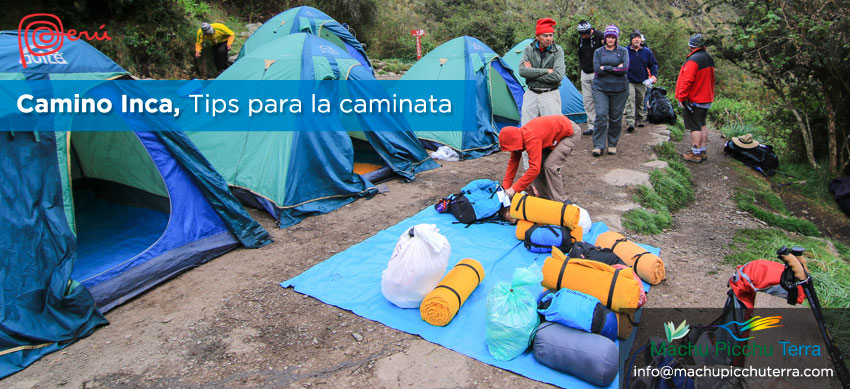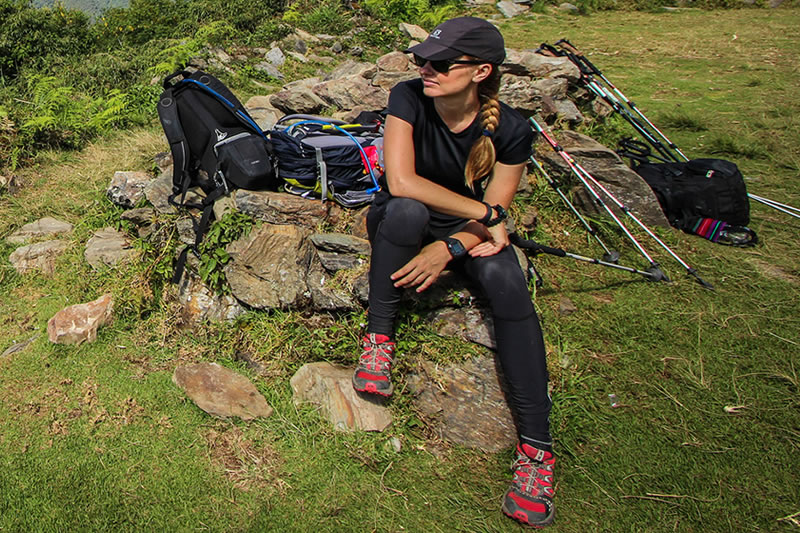
The Inca Trail is the hiking route that everyone wants to do. The reason? It crosses roads built by the Incas hundreds of years ago, the famous qhapac ñan. On the route you can see a great diversity of flora and fauna as well as different Inca archaeological sites. The final prize, the most anticipated, is to know Machu Picchu, the wonder of the modern world. Learn some tips to do this incredible hike without problems.
Making the purchase of the Inca Trail tour is the most important tip. Remember that this is the most popular hike in all of Peru. Many tourists want to do this route so it is necessary to get the tour several months in advance. Contact a Peruvian tourism agency and book the Inca Trail tour 6 or 7 months in advance. Otherwise you will not be able to find availability.
Footwear
The Inca Trail travels asphalted roads by the Incas using stone as the main material. The roads have drainage channels, stone walls and stairs of the same material. There are slopes that are a challenge for walkers. To avoid an accident, it is recommended to wear good non-slip shoes.
Tips:
- The shoes you use must have a sole resistant to the small stones that are on the road.
- During the Inca Trail it can rain at any time so do not forget to wear waterproof shoes.
- If you do not have ideal shoes for the walk, a good option is to take thick socks with you.
The clothes
Choose the clothes that make you feel most comfortable. Keep in mind that you should keep your body dry and warm at the same time, especially at night. For this it is best to wear three layers of clothing. So you can add or remove clothing as you walk.
Tips:
- First layer of clothing: Garment to the body, of some material that lets sweat pass, not cotton.
- Second layer of clothing: Outerwear, breathable (wool is very good or polar).
- Third layer of clothing: Protective clothing against rain such as a waterproof jacket or a windbreaker.
Backpack
The backpacks must be anatomical and adjustable to adapt them to the back easily and safely. Ideally, choose a backpack that fits at the hips and chest. That helps distribute the weight better.
The backpack for the Inca Trail should be 60 liters maximum. It should have wide padded straps, side pockets for small items, and internal pockets to distribute luggage.
Tips:
- Water is essential for any hike because it easily becomes dehydrated. So don’t forget to bring at least 2 liters of water with you.
- The sun’s rays are very harmful on a walk because the skin is damaged by the strong solar radiation. A good sunscreen should not be missing.
- Protecting yourself from insect bites is a priority on any hike. Do not forget to bring a good repellent against insects. On the route of the Inca Trail there are many mosquitoes due to the humidity and the thick vegetation.
- The changes in altitudinal floors cause different climates to exist throughout the Inca Trail journey. This causes the lips to crack even to the point of bleeding. We recommend wearing a pair of lip balms to prevent these discomforts. They are small and do not take up much space.
- For both the sun and the cold it is important that you cover and protect your head. During the day it is essential to wear a good hat that protects from the sun and keeps you cool. At night the cold is intense so protection such as a chullo covering the ears is very necessary.
- Taking the walk with sunglasses is an excellent idea. This is because they not only protect visitors from dust and reflections from the sun’s rays, but it also keeps your eyes rested. This provides great comfort.
- A flashlight is something very necessary on the Inca Trail. At night, especially if it is cloudy, the landscape is completely gloomy. In addition, although the camp will be illuminated, it is always necessary and comfortable that you have your own flashlight on hand.
- Plastic bags are essential and very useful. Remember that during the Inca Trail you cannot leave garbage. So the bags will serve to put the remains of food or garbage that can be generated. It also helps you put dirty clothes and isolate wet clothes.
- A small towel is something that a good hiker cannot forget. There are high probabilities of rain during the route (especially in December, January and March). It will also help you dry your sweat.
- The Inca Trail is a walk with many stairs, long steps, streams, paths through the vegetation where there are loose branches, stones, etc. And despite the road being in good maintenance, one can always have a mishap. Although all agencies include a first aid kit, it is good to carry disinfectants, bandages, cotton, gauze, etc.

Implements for the Walk
The Canes
Trekking poles are widely used during the Inca Trail as they improve balance and reduce the load on the knees.
Tips:
- Metal-tipped canes are not allowed on the Inca Trail. The only poles allowed are those with a rubber tip.
- Tourism agencies usually rent their walking sticks.
- If you are in good physical condition, you can do without the cane.
Physical preparation
Physical preparation is very important since the Inca Trail takes place in a mountainous geography at a maximum altitude of 4,200 meters above sea level.
Tips:
- Do physical activity at least 2 weeks before the day of the Inca Trail. You can go running, cycling, mountaineering or just long walks.
- Adapt to the geography of the city of Cusco (3,400 meters above sea level) at least 2 days before doing the Inca Trail. This way you can have a better acclimatization during the walk. Remember that this hiking route crosses high mountain landscapes such as the ‘Abra Warmiwañusca’, located 4,200 meters above sea level. At that elevation it is normal to feel the effects of altitude sickness.
- Eat a few days before the Inca Trail. Avoid fatty foods and especially alcoholic beverages. Taking the hike with a hangover on top is the worst possible combination to complete a good hike.
Other tips
Despite some difficulties, the Inca Trail is a route that is worth it. Take these final tips into consideration before going on the hike:
- Take a good camera with you. Certainly there are many beautiful landscapes along the route. However, the first view of Machu Picchu is unique. A great photo from there is something worth lasting for a lifetime.
- Don’t forget to carry some cash with you in your pockets. In addition to some last minute purchases, this money will help you to tip the team of cooks, porters and tour guide who will accompany you. Remember that tipping is optional for most tourists do.
- Rain ponchos are much needed items. Remember that January and March are the rainiest months of the year. In February the route remains closed.
By Inca Trail Machu Picchu - Last updated, 22-08-2024
Interested in the Inca Trail? Know more about Information Inca Trail!
- Inca Trail hike as a therapy to heal body and soul
- What is it like to camp overnight on the Inca Trail?
- Online availability Inca Trail to Machu Picchu 2025
- Sustainability tips for the Inca Trail
- How to get to Ollantaytambo?
- Physical preparation for the Inca Trail
